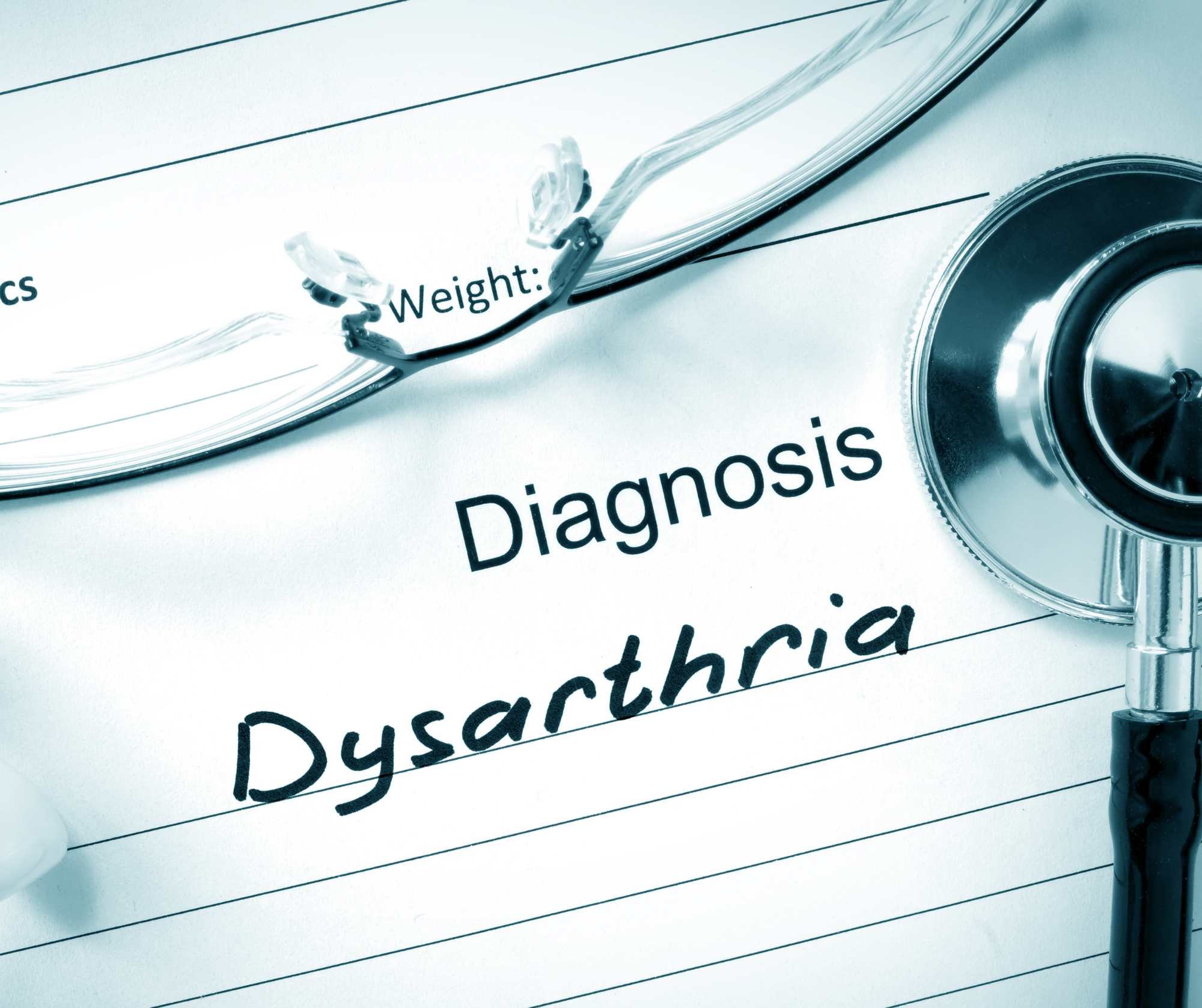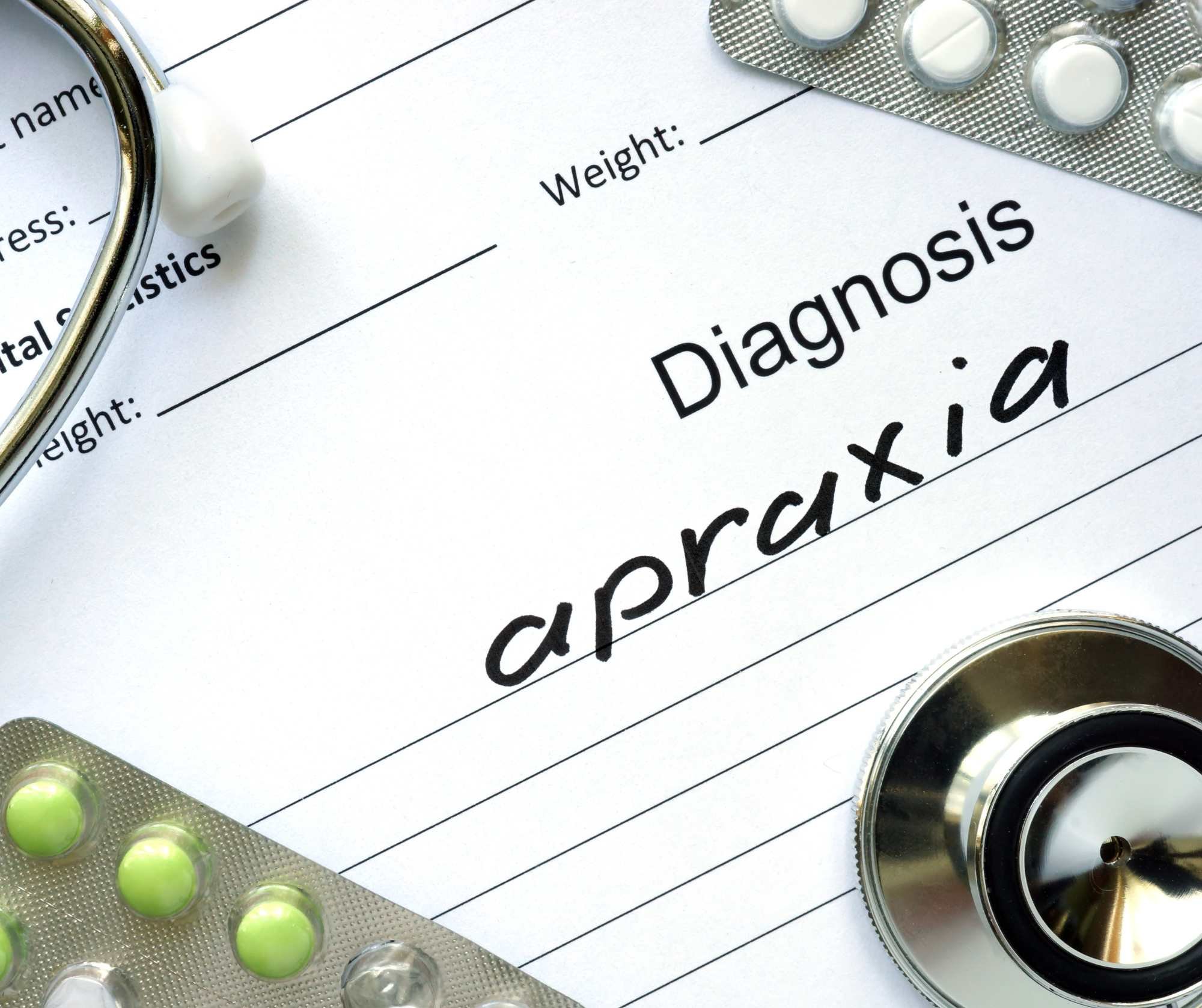Dysarthria vs. Apraxia: Key Differences Explained
Are you trying to understand the differences between dysarthria and apraxia? Both are motor speech disorders, but they impact communication in distinct ways. Dysarthria is a motor speech disorder that involves difficulty planning and coordinating the movements needed for speech production. Imagine weak or poorly coordinated muscles making speaking unclear, breathy, or halting.
Apraxia of speech, on the other hand, disrupts the planning of those movements. Even with normal muscles, the brain struggles to send the right signals, leading to difficulties coordinating sounds and forming words. This article will explore these disorders' unique challenges, diagnoses, and treatment options.
Key Takeaways
Dysarthria is a motor speech disorder caused by muscle weakness or control issues, which affects speech production. At the same time, apraxia is a motor planning disorder in which the brain struggles to coordinate speech movements.
Both dysarthria and apraxia can be developmental or acquired and present in various forms. Specific treatments focus on improving muscle strength and coordination for dysarthria and retraining speech processes for apraxia.
Early and accurate diagnosis by a speech-language pathologist, often in conjunction with a doctor's assessment, is crucial for effective treatment. This can significantly improve communication and quality of life for those affected.
Apraxia of Speech: A Motor Planning Problem
Causes and Risk Factors of Motor Speech Disorders
Comparing Dysarthria and Apraxia of Speech
Diagnosing Dysarthria and Apraxia of Speech: The Role of the SLP
Diagnosing Dysarthria and Apraxia: The Role of the MD
Treatment Approaches for Dysarthria and Apraxia
Supporting Loved Ones with Dysarthria and Apraxia
How Connected Speech Pathology Can Help with Apraxia or Dysarthria
Dysarthria: A Muscle Issue
Now, let's delve deeper into dysarthria motor speech disorders. Dysarthria is a motor speech disorder that occurs when the muscles used for speech are weak, or you have difficulty controlling them. This muscle weakness or lack of control could be present in various parts of the speech mechanism, including:
the lips
the tongue
the vocal cords
the diaphragm
These factors can affect how an individual will produce speech effectively.
Dysarthria can be either developmental or acquired. Developmental dysarthria happens due to brain damage during fetal development or at birth, with cerebral palsy being a common cause. As the name suggests, children tend to have developmental dysarthria.
On the other hand, acquired dysarthria happens as a result of brain damage later in life, such as from a stroke, brain tumor, or Parkinson's disease, with adults being the usual sufferers.
Types of Dysarthria
Dysarthria is not a one-size-fits-all motor speech disorder; it presents in different forms or types. Specific symptoms mark every kind of dysarthria and have distinct causes.
Common symptoms across types of dysarthria include slurred speech, weakness in articulation, and difficulty controlling volume. However, the characteristics of each type help us differentiate and better understand them.
For instance, different types of dysarthria include:
Flaccid dysarthria, resulting from damage to the lower motor neurons, manifests as muscle weakness leading to breathy or nasally speech and a tendency to speak in short phrases.
Spastic dysarthria, linked to damage to the upper neurons on one or both sides of the brain, presents with overly tight muscles, leading to a harsh or nasally voice, slow or strained speech, and speaking at a low pitch.
Ataxic dysarthria, resulting from damage to the cerebellum, includes dysmetria in jaw, face, and tongue movements and may also involve a head tremor. A person may have trouble pronouncing vowels and consonants and emphasizing the right parts of a word when speaking.
Hypokinetic dysarthria, associated with slow, monotone, rigid-sounding speech, results from damage to the basal ganglia.
In contrast, hyperkinetic dysarthria presents with fast, often unpredictable speech.
Lastly, mixed dysarthria, the most common type, includes a mix of two or more of the other five types.
Apraxia of Speech: A Motor Planning Problem
Turning our attention to apraxia of speech, it is a motor speech disorder that results in difficulty speaking due to problems in saying the right sounds and words. It's not about the inability of the muscles to move but rather about the brain's struggle to coordinate these movements for speech. This difficulty can lead to:
distorted sounds
reduced speech rate
irregular stress and intonation
challenges in word retrieval
issues with syllable segmentation
For children, it can result in inconsistent speech, difficulties pronouncing words the same way each time, and incorrectly placing stress within words or syllables.
Types of Apraxia
Like dysarthria, apraxia of speech can be categorized into two primary categories: acquired and developmental. Acquired apraxia of speech, also known as verbal apraxia or oral apraxia, can affect people of all ages, though it's usually found in adults.
It results in the loss of the speech-making abilities one once had. When it affects adults, it's sometimes called adult apraxia of speech.
Childhood Apraxia of Speech (CAS) is a motor speech disorder where the brain struggles to direct or coordinate the movements necessary for speech. It isn't a muscle issue; it happens because your child's brain has difficulty planning for and overseeing the movements of their lips, jaw, and tongue.
Children with CAS are often far better at understanding speech than expressing themselves with spoken words. Despite the challenges, most children with CAS can get much better, if not recover completely, with the proper treatment.
Causes and Risk Factors of Motor Speech Disorders
Understanding the causes and risk factors for dysarthria and verbal apraxia is crucial for developing appropriate treatment strategies. Both disorders can occur due to:
brain damage
tumors
degenerative brain diseases
damage to brain regions responsible for muscle movement
Specific neurological conditions that may lead to dysarthria include:
Huntington's disease
Multiple sclerosis (MS)
Parkinson's disease
Stroke
Certain medications, particularly sedatives and anti-seizure drugs, can also contribute to the development of dysarthria.
The cause of childhood apraxia of speech is largely unknown. While research is ongoing, no single definitive cause has been identified for all cases.
Comparing Dysarthria and Apraxia of Speech
Comparing dysarthria and verbal apraxia can help us better understand these disorders. While they are both motor speech disorders, they differ in various aspects.
For instance, dysarthria is primarily a muscle issue, while apraxia of speech is a motor planning problem. They also manifest differently in terms of symptoms and speech characteristics.
While dysarthria may present with symptoms such as slurred speech, soft or raspy voice, and rapid or slow speech, apraxia, if speech is characterized by difficulty saying sounds correctly, making up words, saying something different than intended, and an awareness of errors.
Regarding speech characteristics, dysarthria can lead to irregular rhythm, pitch, and speech volume. In contrast, individuals with apraxia of speech might struggle with correctly placing speech sounds and syllables.
Both disorders are diagnosed through medical history review, physical examination, and speech and language testing, but the specific tests employed in each case may vary.
Diagnosing Dysarthria and Apraxia of Speech: The Role of the SLP
Diagnosis plays a vital role in the journey of someone living with dysarthria or apraxia. It's the first step towards understanding the disorder and planning for treatment.
A key player in this process is the speech-language pathologist. Speech-language pathologists specialize in diagnosing and treating various communication and swallowing disorders, including dysarthria and apraxia of speech.
Both disorders are diagnosed through a comprehensive evaluation conducted by a speech-language pathologist. The speech evaluation involves a detailed case history, oral mechanism examination to assess the mouth muscles and coordination, and speech and language testing.
Instrumental assessments might also be used in some cases, particularly for dysarthria. Despite the similarities in the overall process, the specific methods used by a speech pathologist to diagnose dysarthria and apraxia of speech vary based on the unique aspects of each disorder.
While there are similarities in how dysarthria and apraxia are diagnosed, there are also distinct differences. For dysarthria, the evaluation may focus on muscle strength, coordination, reflexes, and respiratory function.
On the other hand, in cases of apraxia, the speech therapy evaluation may focus on a client's ability to imitate sounds and sound sequences, plan and sequence speech movements, and produce specific sounds on demand. The speech-language pathologist will also provide feedback regarding overall communication skills.
These subtle differences in the diagnostic process underscore the unique nature of each disorder.
The importance of timely or early diagnosis cannot be overstated. Receiving a diagnosis allows for the following:
Early intervention and treatment
Significant improvement in communication outcomes for individuals with either dysarthria or apraxia
A roadmap to recovery and enhanced quality of life
Diagnosing Dysarthria and Apraxia: The Role of the MD
While a speech-language pathologist conducts the primary evaluation and diagnosis for dysarthria and apraxia, a doctor's involvement can be crucial in the initial stages. A physician contributes significantly to the diagnostic process in several ways.
Firstly, doctors play a crucial role in reviewing the patient's medical history, including past illnesses, surgeries, medications, and neurological conditions that could contribute to speech difficulties.
They also conduct a physical examination to assess for neurological signs or weakness related to the speech disorder. This may involve testing reflexes, muscle tone, coordination, and sensation.
They might also order imaging tests such as MRI or CT scans and brain and nerve studies like EEG and EMG to create detailed images of the brain and identify neurological causes of speech problems related to the central nervous system.
Sometimes, blood tests might be ordered to rule out specific conditions or assess for electrolyte imbalances that could affect muscle function within the nervous system.
Once the doctor has gathered a comprehensive picture of the patient's medical history and conducted a physical examination, they will likely refer the patient to a qualified speech-language pathologist for a specialized speech and language evaluation.
Treatment Approaches for Dysarthria and Apraxia
Once a diagnosis of dysarthria or apraxia is confirmed, the focus shifts to treatment. Speech therapy plays a critical role in treating both these disorders. It aims to enhance speech abilities and compensate for communication challenges.
Depending on the individual's specific needs and goals, various speech therapy techniques are employed to address the unique speech issues faced by individuals with dysarthria and apraxia.
In some cases, augmentative and alternative communication methods, such as sign language, picture boards, or speech-generating devices, can also support communication for those developing communication skills.
Dysarthria Treatments: Strengthening Muscles and Improving Clarity
Speech therapy for dysarthria primarily focuses on strengthening the speech muscles, enhancing vocal and respiratory support, and making speech more precise. By repetitively practicing speech movements based on the principles of neuroplasticity, dysarthria treatments can improve muscle function and communication effectiveness.
Articulation exercises, often employing phonetic placement cues and biofeedback, enhance the clarity of speech sounds from isolation to conversational contexts. Respiratory muscle strength training (RMST) increases breath support, improving the volume of speech and reducing symptoms of breathlessness.
Personal amplifiers can raise the loudness of speech for dysarthric patients, aiding in communication, especially in noisy surroundings.
Sentence stress exercises help dysarthric patients emphasize keywords, significantly improving the naturalness and intelligibility of their speech. Pacing boards aid in controlling the speech rate, thereby enhancing intelligibility by syncing the physical action of pointing with syllable production. Patients are also taught intelligibility strategies such as:
signaling the beginning and end of speech
stating the topic clearly
simplifying messages
using gestures to improve overall communication.
Apraxia Treatments: Retraining Speech Processes and Coordination
When treating apraxia, speech-language pathologists focus on improving sound sequencing, speech movement coordination, and sensory treatments for sound production.
The articulatory-kinematic approach in apraxia therapy includes articulatory placement cues, visual and auditory feedback, and tactile-kinesthetic cues such as those used in the PROMPT method.
Rate Control and Timing Approaches use rhythm and pacing methods like:
finger tapping
singing
choral reading
metronomic pacing
These strategies assist with coordinating speech movements in apraxia treatment. Technological support systems are also available to provide structured support for individuals with apraxia to practice their communication skills outside of speech therapy.
For children with moderate to severe childhood apraxia of speech, there are specialized treatments available, including:
Dynamic Temporal and Tactile Cueing (DTTC): This treatment focuses on intensive motor learning principles.
Rapid Syllable Transition Treatment (ReST): This program targets speech movement accuracy and helps children progress from single sounds to connected speech.
Nuffield Dyspraxia Program (NDP3): This program provides focused treatments for children with apraxia.
These specialized speech therapy treatments are designed to help improve speech skills in children with apraxia.
Melodic Intonation Therapy is a specific treatment used in apraxia to aid the reacquisition of speech production control.
Treatment for Apraxia of Speech
Check out our blog on treatment for apraxia of speech in adults for more information!
Supporting Loved Ones with Dysarthria and Apraxia
Living with a speech disorder like dysarthria or apraxia can be challenging, not just for the individuals affected but also for their loved ones. Supporting these individuals in their communication journey requires understanding, patience, and some specific strategies. Here are some strategies to consider:
Choose a quiet setting for communication
Ensure face-to-face interaction
Use clear gestures or computers for communication
Ask for clarification when necessary
These strategies can go a long way in aiding communication.
Giving individuals with dysarthria time to talk, minimizing background noise, asking yes or no questions, and providing paper and pencils for assistance can help. A total communication approach with gestures, pointing, and low-tech and high-tech tools can benefit those with apraxia.
It is essential to focus on meaningful communication, encourage slow and deliberate speech, use facial expressions, rephrase sentences, and avoid stressful interactions.
Frequently Asked Questions
1. How can you tell the difference between apraxia of speech and aphasia?
You can tell the difference between apraxia and aphasia by understanding that apraxia primarily affects speech production, resulting in distorted or inconsistent speech, while aphasia is a language disorder that may impair language understanding and expression.
2. What is the difference between dysphagia and apraxia of speech?
Dysphagia and apraxia of speech are both communication disorders, but they target different aspects. Dysphagia is difficulty swallowing, while apraxia of speech affects the planning and coordination of speech movements despite having the muscle ability to speak. Imagine dysphagia as trouble getting food down the "highway" and apraxia of speech as the brain struggling to give the muscles clear directions for talking.
3. What is the difference between dysarthria and apraxia of speech?
The critical difference between dysarthria and apraxia of speech lies in the affected areas of speech production. In dysarthria, the issue arises from the coordination of muscles for speech, whereas CAS involves difficulties in sequencing and articulating words. This distinction is essential for accurate diagnosis and tailored therapeutic interventions.
4. What are the causes of apraxia and dysarthria?
Dysarthria and apraxia can be caused by trauma, tumors, strokes, degenerative brain diseases, stroke, and traumatic brain injury, while specific medications and neurological conditions can also contribute. It's essential to be aware of these risk factors to understand the potential causes of these disorders.
5. Who treats motor speech disorders such as apraxia and dysarthria?
Speech-language pathologists are experts who diagnose and treat motor speech disorders like dysarthria and apraxia. Through evaluations and therapy sessions, they can help individuals improve their speech clarity, coordination, and overall communication effectiveness. They offer different treatments for patients and family members to support communication needs.
How Connected Speech Pathology Can Help with Apraxia or Dysarthria
At Connected Speech Pathology, we understand the challenges those living with apraxia or dysarthria face. We are here to help with:
Expert evaluation
Customized treatment plans
Practice with sounds and syllables
Ongoing support and collaboration
Our experienced speech-language pathologists will conduct a comprehensive evaluation to identify your speech disorder's specific type and severity. This evaluation is the first step towards crafting a customized treatment plan tailored to your unique needs and goals.
Depending on the nature of your disorder, these treatment plans may include:
Exercises to improve muscle strength and coordination for individuals with dysarthria
Therapy focuses on improving your ability to plan and sequence the complex movements needed for speech for those with apraxia.
Targeted practice exercises to improve your articulation and sound production
Sometimes, we might incorporate Alternative and Augmentative Communication (AAC) techniques to support your communication needs. We can also provide training for your family members and caregivers to help them better understand your communication challenges and support you in daily interactions.
Our speech-language pathologists will work closely with you throughout your therapy journey, monitoring progress and adjusting the treatment plan as needed. We can also collaborate with your doctor or other healthcare providers to ensure a comprehensive approach to your care.
Summary
In conclusion, dysarthria and apraxia are distinct motor speech disorders that challenge effective communication. While dysarthria is a muscle issue affecting speech, apraxia involves difficulties planning and executing speech movements.
Understanding these disorders, their causes, and risk factors is critical to crafting effective treatment strategies. With early diagnosis and the right treatment approach, individuals with either disorder can improve their communication skills and quality of life.
Remember, while the journey may be challenging, you are not alone. With the proper support and resources, you can navigate the challenges of dysarthria and apraxia with resilience and hope.
About the Author
Allison Geller is a communication coach, speech-language pathologist, and founder of Connected Speech Pathology, an international online practice providing professional communication coaching and speech therapy for children, teens, and adults. With more than two decades of experience, she has worked in medical and educational settings, published research on aphasia, and leads a team of specialists helping clients improve skills in public speaking, vocal presence, accent clarity, articulation, language, fluency, and interpersonal communication.













